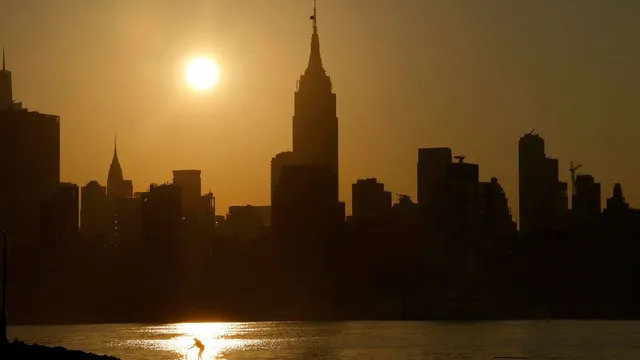
Maryland braces for severe storms and extreme heat wave
2025-06-19 07:39- Severe thunderstorms are forecasted in Maryland for Thursday afternoon with risks of damaging winds and hail.
- A heat wave is expected to follow, with temperatures potentially soaring into the upper 90s.
- Residents are urged to take precautions due to the dangerous combination of severe weather and extreme heat.
Express your sentiment!
Insights
Maryland is currently facing a challenging weather pattern as stormy conditions are forecasted, particularly for Thursday afternoon and evening. Residents are warned to prepare for strong thunderstorms that may develop, capable of producing damaging winds, hail, torrential rain, and dangerous lightning. The peak risk for severe weather is expected between 2 PM and 8 PM, prompting officials to issue a severe weather alert day. Following this, temperatures are predicted to rise significantly, potentially reaching upper 90s with the heat index feeling above 100 degrees by early next week. The high-pressure system leading to this extreme heat will command attention as it influences widespread discomfort across the region. As we shift into the weekend, dangerous heat will also be a concern for many outdoor activities, with particular caution urged for attendees of major events. Hydration, wearing breathable clothing, and limiting exposure to direct sunlight will be critical measures residents should take to ensure their safety during this hazardous weather period. Notably, vulnerable populations, including the elderly and children, are at a heightened risk as the conditions worsen. Forecasts indicate that the hottest weather of the year is on the way, marking a significant transition into a more oppressive summer climate for the area, making it imperative for residents to be well-prepared and informed. As temperatures soar, Maryland will become one of the states most affected by this intense heat wave, which many experts believe poses health risks and increases the potential for heat-related illnesses.
Contexts
Humidity plays a significant role in determining the overall feel of summer heat, known as the heat index. When humidity levels rise, the body’s ability to cool itself through perspiration diminishes. This is because high humidity means that the air is already saturated with moisture, preventing sweat from evaporating efficiently. Consequently, even if temperatures are within a comfortable range, high humidity can make the perceived temperature feel substantially higher, leading to discomfort and potential heat-related illnesses. Understanding the relationship between temperature and humidity is crucial for both public health and urban planning, especially as climate change continues to influence weather patterns globally. The interaction between humidity and temperature not only affects individual comfort but is also critical for overall health and wellness. During the summer months, meteorologists often refer to the heat index, which combines air temperature and relative humidity into a single value, to provide a better understanding of how hot it feels to the human body. When the heat index rises above 80°F, individuals become increasingly susceptible to heat exhaustion and heat stroke. Vulnerable populations, such as the elderly, individuals with pre-existing health conditions, and those without access to adequate cooling, face heightened risks. Therefore, accurate communication of the heat index during summer is essential for public health advisories. In urban areas, the microclimate is heavily influenced by factors such as vegetation, building materials, and water bodies, which in turn affect humidity levels. Cities often experience a 'heat island' effect where the concentration of buildings and concrete raises temperatures. This urban heat island effect exacerbates the discomfort felt due to humidity, as such areas tend to retain heat for longer periods. Implementing green infrastructures, such as parks and green roofs, can play a significant role in mitigating these impacts by promoting cooling through increased vegetation, which can decrease local humidity levels and enhance air quality. As urban populations continue to grow, integrating considerations of humidity and temperature into city planning becomes increasingly vital. Finally, climate change is expected to intensify the impacts of humidity on summer heat. As global temperatures rise, the atmosphere holds more moisture, leading to higher humidity levels. This creates a feedback loop where elevated temperatures lead to increased humidity, which in turn makes the heat feel even more oppressive. Predictions suggest that many regions will experience more frequent and intense heat waves as a result. Therefore, researchers and policymakers must focus on adaptive strategies that consider both temperature and humidity, particularly as we enter a period of heightened climatic instability. Public awareness campaigns and infrastructural adaptations will be necessary to equip communities for the challenges posed by increased humidity and the resulting heat.